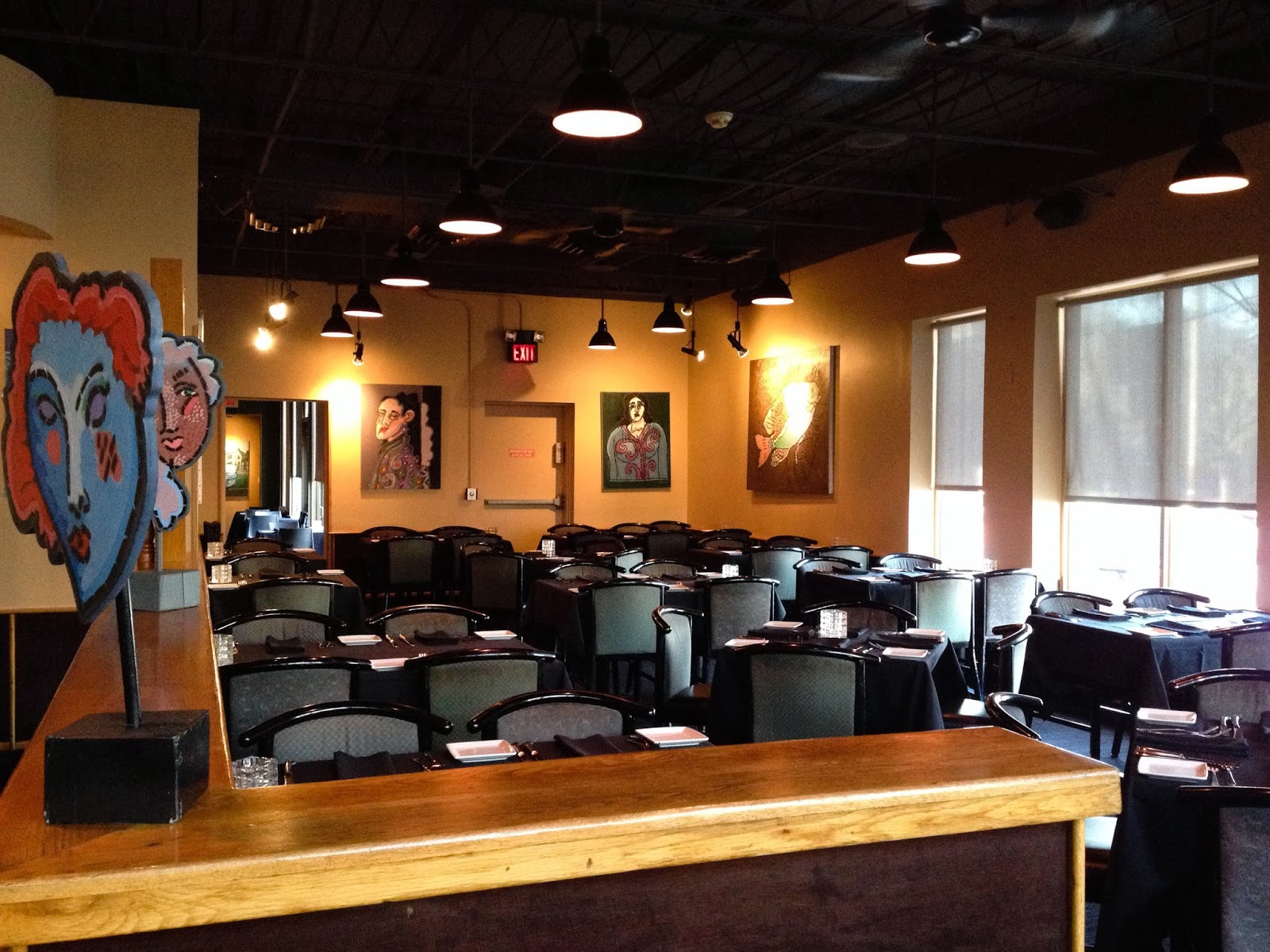 | |
| All photos © 2015 Mary Brace |
Admission: I never ate at Sunset Grill. Early on, my first summer in Nashville when I was still blissfully unaware and about to be informed about the town's unspoken dress codes, I wandered in and was immediately gobsmacked by how out-of-place my grungewear was amidst the lamé. Not that there's anything wrong with lamé (in Nashville): but it was pretty obvious I was in the wrong place. When my friend and I hit the ladies room to mull over our next move, a well-intentioned woman fixing her eye shadow suggested we try The Villager Tavern. We did. And there was much relief in the land.
I never went back to the Sunset Grill because it just wasn't my kind of place. The experience left the permanent impression that it was much more a social place than a fantastic food place. About a year ago I was preparing a database of Happy Hour specials around town, and was surprised to read Sunset Grill was integrating local/regional food sources. Perhaps it came too late, and the information didn't make it to the awareness of diners who support local food and who might have better supported the restaurant for doing so. The modern food movement of eaters who want local and organic along with excellent preparation, combined with Nashville and Davidson County's changing demographics creates a huge challenge to restauranteurs whose businesses have flourished in the past, simply by being in the city's main areas of commercial development. But considering how much of Tennessee is devoted to agriculture, in no way should the challenge be insurmountable.
Prior to the moves that made us an "It City," simply being downtown, midtown, Hillsboro Village, or Green Hills/Belle Meade meant nearly immediate access to a sizable population with plenty of disposable income. Restauranteurs didn't have to knock themselves out to present world-class meals as long as no one else was trying to meet the demand — and what demand there was, was mostly confined to their already established turf.
The first restaurant I found that challenged the status quo was Mad Platter, in Germantown. Well-prepared, minimally-processed food in an unpretentious setting where $50 bought you an evening meal that beat the socks off of the previously frozen stuff coming to the tables in Midtown and Hillsboro Village. Although the small core of Germantown was already gentrified at the time, Mad Platter was, for the most part, a "destination restaurant." There was nothing else in the area, yet. No Monell's, no Lazzarolli Pasta. No cupcakes. No Rolf. Meanwhile, in another part of town which was plenty developed, commercially, but home to few of the city's white middle & professional classes, La Hacienda opened on Nolensville Road and became a huge success story with a clientele that put Mexican day workers in the same lunch room as California-transplanted music industry players, on a daily basis. More and more wonderful ethnic restaurants of every kind and variety have increasingly lined Nolensville Road and its tributaries ever since La Hacienda opened in 1993.
And as I never went back to Sunset because of the social code, I know there are people in Southwest Nashville who never drive Nolensville Road, if they don't have to, for the same reason. Just, in reverse.
And then there's East Nashville, its explosion upon gentrification, and top notch culinary contributions. If you bought in early, you could have gotten a house for under $100k, easily, and if you bought in really early, make that $60k. $50k. And less. Even now, there are still plenty of homes running under $200k.
This is where the demographics come in, for real: although East Nashville real estate prices are now approaching insanity, after this month's mortgage payment there are still thousands more people under the age of 50 on that side of the Cumberland River who can afford a night out at Lockeland Table than there are in Hillsboro Village, where homes start at $350k.
This trend is going to continue; as our population increases, it's going to have a growing percentage of diners with more experienced palates who can tell fresh food from frozen, and what was good enough to earn praise in Midtown in 1994 isn't going to make the cut if restauranteurs aren't willing to put the emphasis on what diners want in 2015.